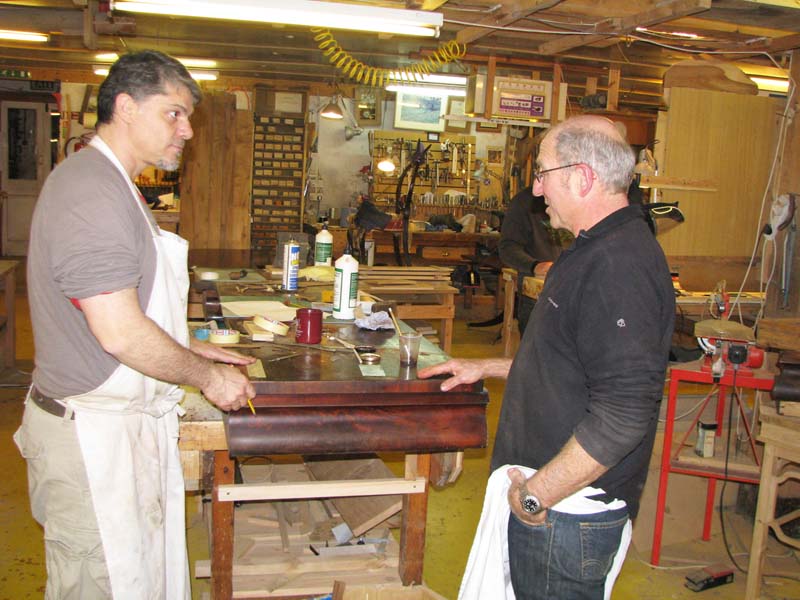This blog based on a conversation with Simon Macintyre, a visiting furniture restoration expert who runs his own restoration business in Sussex near London. Simon works on private furniture restoration and for the antique trade. It’s the ninth year that Simon has been running his course at the Chippendale School of Furniture.
“The furniture school students are always very enthusiastic; they love the learning experience. Usually they’ve not done any furniture restoration before. They maximize the learning opportunities here and many enjoy the furniture restoration week more than they initially expected.
“Each morning we discuss the pieces of furniture being restored. I’ve also given a talk on setting up a furniture restoration business. Several of the students want to go on to do furniture restoration rather than furniture making.

“What’s a good direction to go in? What are the pitfalls to avoid? I try to steer them gently down the right path because setting up on your own is a big step.
“The furniture students learn the principles of good furniture construction and are shown how too much focus on style can result in fragile designs. Chairs made of brittle hardwoods, for example, can be disastrous. Good furniture needs the right combination of design and function.
“We’ve been working on a nice big sideboard which needs lots of veneer repairs, as well as restoring some chairs and rocking horses. They are clients’ pieces so it depends on what pieces are available.
Doing furniture restorations means that I meet lots of interesting people. I recently did a restoration project for the captain of a destroyer who captured some code books from a German U-boat during the War.
“Back in Susses, I’ve also been restoring a fine English Gillows* reading table with a tilting top and ratcheting height mechanism.
“One of my current projects is making and bleaching an extra leaf for a dining room table to double its size.
“I’m looking forward to visiting the school again in 2014!”
*Gillows: This background to Robert Gillow (1704–1772) has been edited from Wikipedia.
Born in Singleton, Lancashire Gillow served an apprenticeship as a joiner and cabinet maker. As a ships carpenter in Jamaica he became interested in mahogany and brought samples of the wood back to Lancaster in 1720, possibly the first mahogany to be imported to England.
He founded the luxury furniture and furnishings firm Gillow of Lancashire in 1730. During the 1730s he began to exploit the lucrative West Indies trade exporting mahogany furniture and importing rum and sugar. He also fitted out ships’ cabins and did finishing work in construction.
The firm rapidly established a reputation for supplying high quality furniture and furnishings to the richest families in the country. They also had a London workshop in Thames Street. In 1764 a permanent London branch of Gillow’s was established at 176 Oxford Road (now Oxford Street) by Robert’s son, Thomas Robert Gillow (1745–1793), and William Taylor.
Following Robert’s retirement in 1769, the business was continued by his two sons, Richard (1734–1811) and Thomas Robert. Richard Gillow was an architect of some note, and he is credited with originating the telescopic dining-table and the first English billiard-table.
For over a century, the firm was known for its luxury furniture and furnishings. During the final years of the 19th century the company ran into financial difficulty which resulted in the establishment of still famous Waring & Gillow in 1903.
